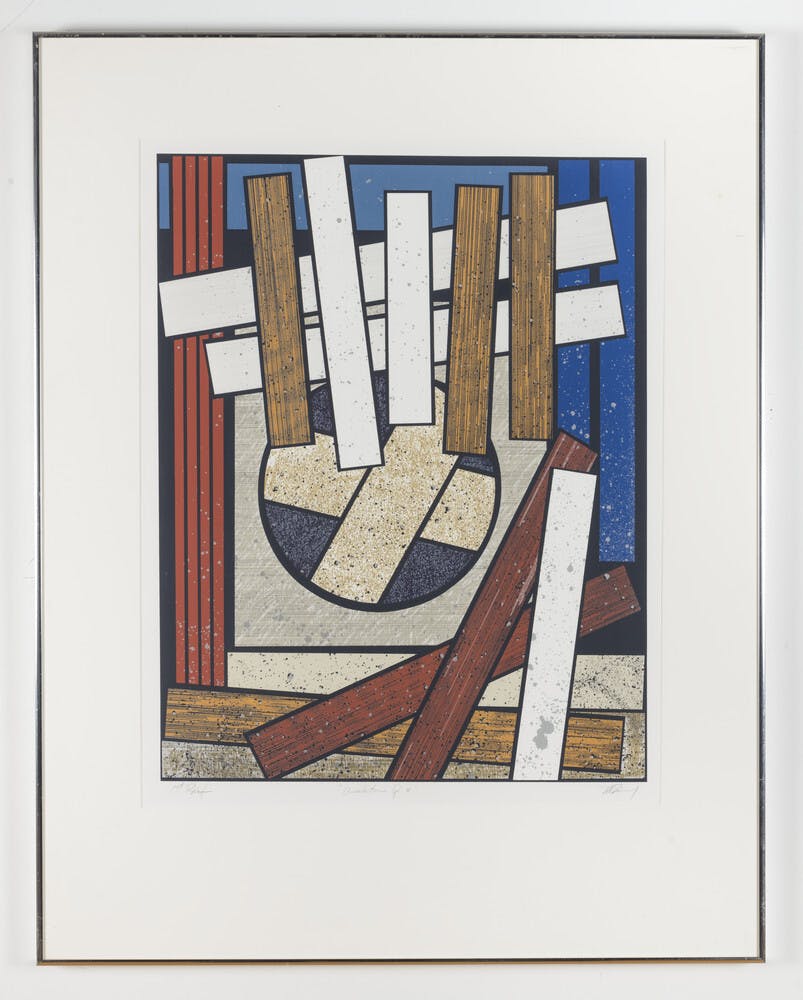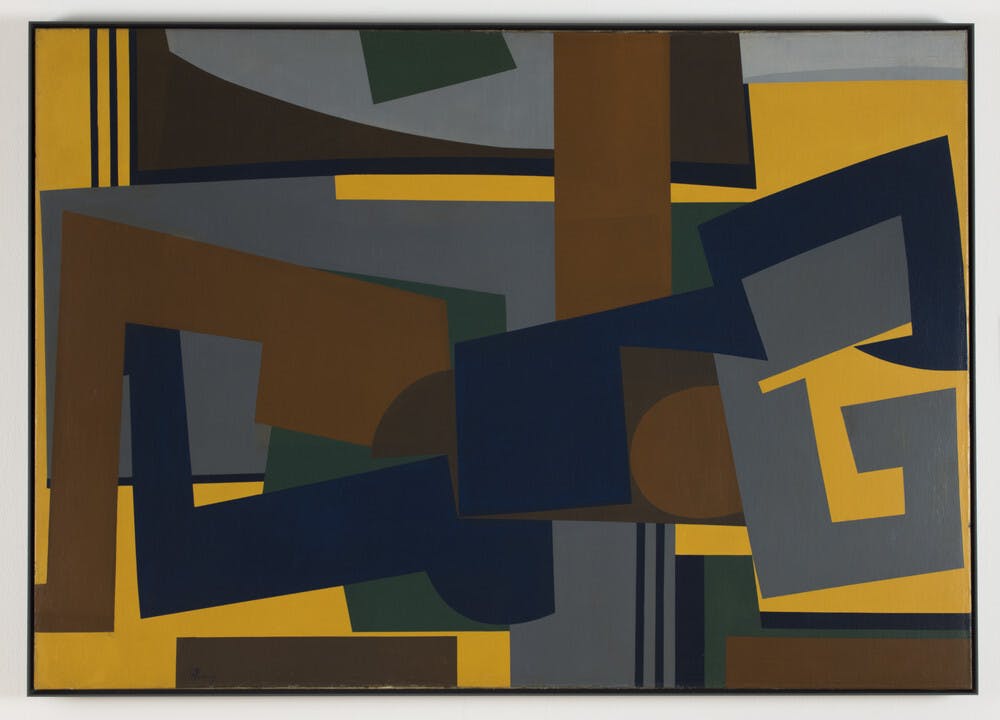Mavis Pusey
(1928–2019)Known for her use of bold geometric forms, Mavis Pusey pioneered a nonrepresentational, hard-edge abstract approach to artmaking at a time when Black artists were expected to create work explicitly addressing identity and social unrest.
Biography
Growing up in Jamaica, Pusey learned to sew from her aunt; one of her first jobs was cutting fabric in a garment factory in Kingston. At eighteen, she relocated to New York to study at the Traphagen School of Fashion. After earning a scholarship from the Ford Foundation, she decided to pursue a career as an artist and transferred to the Art Students League. There, she studied painting and printmaking while working part-time in a bridal gown boutique.
In the mid-1960s, Pusey moved to London to work as a patternmaker for Singer. Over the next decade, she spent considerable time with Birgit Skiöld, a prominent Swedish printmaker and modern artist whose London atelier was frequented by renowned artists like David Hockney and Dieter Roth, as well as in Paris, where she had her first solo exhibition, in 1968. Upon returning to New York, in 1969, she worked at the workshop of Robert Blackburn for three years and developed a fascination with construction, demolition, and urban change. Her abstract compositions and geometric shapes reflect the energy and chaos that permeated the city at that time. Pusey was a dedicated educator throughout her career, working at institutions including Rutgers University, the New School, and the Pennsylvania Academy of Fine Arts during the 1970s and 1980s. In 1988, she moved to Orange, Virginia, where she joined the faculty of the Woodberry Forest School as the only Black teacher and one of just four women.[1]
Following years of a decline in her health, Pusey passed away in 2019. Her work is in the collections of major institutions such as the National Museum of African American History and Culture, Museum of Modern Art, and Birmingham Museum of Art.
[1] Neil Genzlinger, "Mavis Pusey, Under-the-Radar Abstract Artist, Is Dead at 90,” New York Times, April 30, 2019, nytimes.com/2019/04/30/obituaries/mavis-pusey-dead.html
Mavis Pusey
(1928–2019)Known for her use of bold geometric forms, Mavis Pusey pioneered a nonrepresentational, hard-edge abstract approach to artmaking at a time when Black artists were expected to create work explicitly addressing identity and social unrest.
Dissolution of X, c. 1970
Biography
Growing up in Jamaica, Pusey learned to sew from her aunt; one of her first jobs was cutting fabric in a garment factory in Kingston. At eighteen, she relocated to New York to study at the Traphagen School of Fashion. After earning a scholarship from the Ford Foundation, she decided to pursue a career as an artist and transferred to the Art Students League. There, she studied painting and printmaking while working part-time in a bridal gown boutique.
In the mid-1960s, Pusey moved to London to work as a patternmaker for Singer. Over the next decade, she spent considerable time with Birgit Skiöld, a prominent Swedish printmaker and modern artist whose London atelier was frequented by renowned artists like David Hockney and Dieter Roth, as well as in Paris, where she had her first solo exhibition, in 1968. Upon returning to New York, in 1969, she worked at the workshop of Robert Blackburn for three years and developed a fascination with construction, demolition, and urban change. Her abstract compositions and geometric shapes reflect the energy and chaos that permeated the city at that time. Pusey was a dedicated educator throughout her career, working at institutions including Rutgers University, the New School, and the Pennsylvania Academy of Fine Arts during the 1970s and 1980s. In 1988, she moved to Orange, Virginia, where she joined the faculty of the Woodberry Forest School as the only Black teacher and one of just four women.[1]
Following years of a decline in her health, Pusey passed away in 2019. Her work is in the collections of major institutions such as the National Museum of African American History and Culture, Museum of Modern Art, and Birmingham Museum of Art.
[1] Neil Genzlinger, "Mavis Pusey, Under-the-Radar Abstract Artist, Is Dead at 90,” New York Times, April 30, 2019, nytimes.com/2019/04/30/obituaries/mavis-pusey-dead.html




